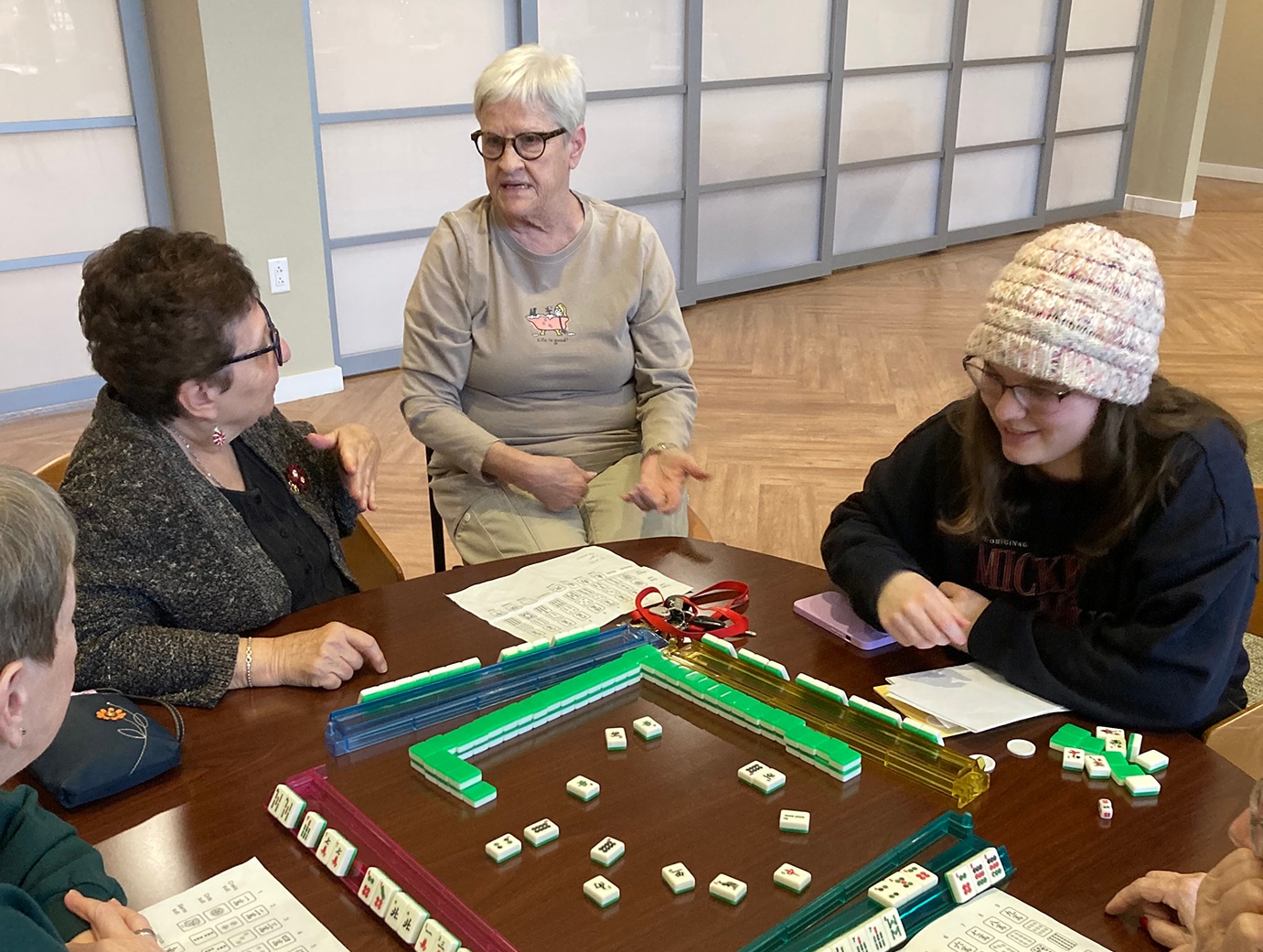(OSV News) — On July 6, 1973, light surrounded a wooden statue of Our Lady of All Nations at a convent in Akita, Japan, and the statue spoke to a novice, asking her to pray for the reparation of the sins of humanity and to be obedient to her superior. When the statue ceased speaking, the novice and other nuns discovered the statue had a bleeding wound in its hand.
The novice, 42-year-old Sister Agnes Sasagawa, would hear the statue of Mary talk two other times that year, on Aug. 3 and Oct. 13. In the meanwhile, Sister Agnes would encounter visions of her guardian angel and experience the stigmata, the wounds of Jesus Christ, as a wound in her left hand. She, the sisters of the Institute of the Handmaids of the Sacred Heart of Jesus in the Holy Eucharist and hundreds of visitors also would witness the 3-foot-tall statue sweating as well as shedding tears, a phenomenon that continued sporadically, 101 times total, until 1981.
With the 50th anniversary of the miraculous events from Mary now known as “Our Lady of Akita,” her messages to Sister Agnes continue to resonate, said Mark Miravalle, a theology professor who holds the St. John Paul II Chair of Mariology at Franciscan University of Steubenville in Ohio. Like Mary’s messages with other reported apparitions, he said, they compel Catholics to an examination of conscience to “see if we can be more generous” in prayer, especially the rosary, and offering sacrifices for the reparation of sins.
Before joining the Handmaids of the Eucharist, Sister Agnes had suffered ill health, including paralysis. Just months before she entered in May 1973, she lost her hearing. In her first month at the convent, she experienced supernatural light and beings in the convent’s chapel, which she reported to the local bishop, Bishop John Shojiro Ito of Niigata. The bishop later witnessed the convent’s apparently miraculous events himself. In 1984, he approved their supernatural character and encouraged the veneration of “the Holy Mother of Akita.”
In a pastoral letter announcing the miraculous occurence’s approval, Bishop Ito said he witnessed the statue’s tears, and that what was observed by at least 500 others and studied at the University of Akita could not have been achieved by “human maneuvers.” It also was broadcasted on Japanese television.
Sister Agnes received both messages from her guardian angel, whom she saw in a vision, and Mary, whose voice seemed to come through the statue. In her first message, Mary told the novice her hearing loss would be healed, to pray in reparation for “the sins of men” as well as for priests and bishops. In August, she told Sister Agnes that God the Father was “preparing to inflict a great chastisement on all mankind,” but “prayer, penance and courageous sacrifices can soften the Father’s anger.”
Mary repeated that message in October, and also said that “fire will fall from the sky and will wipe out a great part of humanity,” and called for daily recitation of the rosary. She also warned that the devil would infiltrate the church, with “cardinals opposing cardinals, bishops against bishops” and “priests who venerate me will be scorned and condemned by their confreres.”
Robert Fastiggi, a theology professor at Sacred Heart Major Seminary in Milwaukee and Mariology expert, said while it can be difficult to imagine God as wrathful, the messages’ theology reflects Scripture.
“Wrath is there in the Bible, there’s no doubt about it,” he said. “St. Thomas Aquinas says that God’s wrath is really the effects of our sins. It’s what we experience, a kind of wrathful effect when we are not following God. It’s not like God is not loving and he’s a wrathful, angry God. But it’s just that he wants conversion, and there are effects of sin, which is why God grieves over our sins.”
As to the message about clergy, “a lot of this has been happening,” Fastiggi said. “It’s happened in the past, but it’s more prominent these days.”
Mary’s message at Akita “is a universal message,” Miravalle said, despite the mystical phenomena taking place in Japan, where less than 1% of the population is Catholic.
“It’s not just Akita — it’s the whole Marian message that bespeaks Our Lady trying to intercede so that we do not face the full consequence of sin (and) injustice, but we have mercy. That presupposes our cooperation, and I think that’s why Akita is quintessentially relevant,” he said.
The Akita phenomenon also is one of the few miraculous occurrences with scientific backing, said Michael O’Neill, a Marian apparition expert known as “the Miracle Hunter.”
With other other apparitions and supernatural phenomena, bishops rely on the testimony of the visionary and compare it to church teaching, “but there is no scientific way to actually show that something supernatural is happening,” he said. “In the case of Akita, you have a weeping statue that they were able to investigate and validate that it was having human tears and human blood.”
The Akita events are unique in that they are often categorized with Marian “apparitions,” but the approved phenomena describe Mary speaking through the statue, O’Neill said. And, he pointed out, Sister Agnes is still alive, now in her early 90s.
In May 1974, seven months after Mary’s final message to Sister Agnes, her guardian angel told her she would regain her hearing, and she did, temporarily, on Oct. 13 of that year, the message’s anniversary. In May 1982, she again regained her hearing, this time permanently.
Other miracles have been reported in association with Our Lady of Akita, including the healing of a Korean woman from terminal brain cancer in 1981.
Author Janice T. Connell and her husband, Edward, both attorneys, traveled to Akita in 1991 at the invitation of Bishop Ito, who had retired 1985. The trip was squeezed in amid other travel in Asia, and the Connells described remarkable events in the course of their journey and single overnight visit that they attribute to supernatural intervention.
Connell writes about their experience in “The Secrets of Mary: Gifts from the Blessed Mother” (2009), and about Our Lady of Akita in general in “Meetings with Mary: Visions of the Blessed Mother” (1995). According to her report of Sister Agnes’ miraculous experiences, the nun not only heard Mary speak from the statue, but she also experienced a vision of the Virgin Mary, first while recuperating at a hospital four years before joining the convent, and later in the convent itself.
Connell said that during her 1991 visit, she and Edward spoke with Sister Agnes for two hours. She had wanted to ask Sister Agnes about the “fire falling from the heavens” in Mary’s second message, but the visionary “didn’t want to focus on chastisements. She wanted to focus on the real presence of Jesus in the Eucharist,” Connell told OSV News June 27.
While the Connells have traveled to other Marian shrines, Akita “is one of the most amazing places we’ve ever been in our lives,” Connell said. “It’s made me understand how incredibly privileged and blessed I am to have a relationship with Our Lady and to know her Son in the Eucharist.”
Many observers have drawn connections between the speaking statue and other mystical phenomena, especially the apparitions of Our Lady of Fatima in 1917, and the alleged (but unapproved) apparitions of the Lady of All Nations in postwar Amsterdam.
The Akita statue’s final locution was Oct. 13, the anniversary of the Miracle of the Sun, when thousands gathered near Fatima, Portugal, to witness a promised miracle, and reported seeing the sun “dance,” or move throughout the sky. Some have drawn parallels in Mary’s messages at Fatima and Akita asking for reparation for sins and warnings of future turmoil in the world.
The statue itself — an image of Mary standing on a globe in front of a cross — was carved in 1963 by an Akita artisan and modeled after the Lady of All Nations, reported apparitions of Mary by a Dutch woman between 1945 and 1959 in Amsterdam. While the “Lady of All Nations” image, title of Mary and prayer are approved, the reported apparitions themselves are not approved as supernatural phenomena by the bishop of Haarlem-Amsterdam and remain controversial.
Fastiggi emphasized that Catholics are not required to believe in Marian apparitions, even those the church declares them “worthy of belief.”
The Catechism of the Catholic Church, in paragraph No. 67, says that “private revelations,” even one’s recognized by the church, are not part of “the deposit of the faith.” “It is not their role to improve or complete Christ’s definitive Revelation, but to help live more fully by it in a certain period of history,” it states. “Guided by the Magisterium of the Church, the ‘sensus fidelium’ knows how to discern and welcome in these revelations whatever constitutes an authentic call of Christ or his saints to the Church.”
While some could use Our Lady of Akita’s message to support complaints about the state of the church, especially with the message’s description of church leaders in opposition, Fastiggi said that reading would miss the mark.
“The message is not one of complaint but of peaceful action, and intercession and praying the rosary,” he said, emphasizing that Mary said to pray for the pope, bishops and priests. “The warning could be given to inspire us to be more faithful.”
He added, “People are losing faith. There’s much sin. So we need to return to the Eucharist. We need to pray the rosary. We need to intercede for the conversion of poor sinners. That’s the message, and that is as timely now as ever.”







